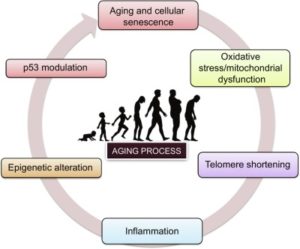Senolytics to Target Senescent Cells: Extend Healthspan and Possibly Lifespan

In the near future – within the next five years or so there will be a paradigm shift in how health care practitioners across the spectrum – including allopathic MD’s will be able to help their patients mitigate one of the key identified degenerative processes associated with aging.
What I am referring to is the pending availability of compounds referred to as “senolytics” – compounds developed to target senescent cells (referred to as “zombie cells” in the popular literature).
I suggest that the allopathic MD community will be very much involved in this treatment modality due to the fact that big pharma and the biotech industry are actively engaged in the development of pharmaceutical, prescription drugs for this application. In fact there are currently trials going on which are testing senolytic drugs and early results should be available later this year.
So let me give you some background and context on why this concept of senolytic compounds is perceived to be such a significant development to target the deterioration associated with the aging process:
Senescent Cells: What Are They?
From the FightAging.org website:
(great free weekly newsletter on the latest developments in the antiaging research community)
The evidence of the past decades, and particularly the past seven years, strongly supports the idea that the accumulation of senescent cells is a root cause of aging. Cells become senescent in large numbers day in and day out, a normal end of life state for somatic cells that have reached the Hayflick limit. Cells also become senescent as the result of damage, or a toxic environment, and there is ever more of that with advancing age. Near all of these cells are destroyed quite quickly after they enter a senescent state, but enough linger to ensure that a few percent of all cells are senescent in old age. These problem cells secrete a potent mix of signals that induces chronic inflammation, degrades tissue structure, and alters the behavior of normal cells for the worse.